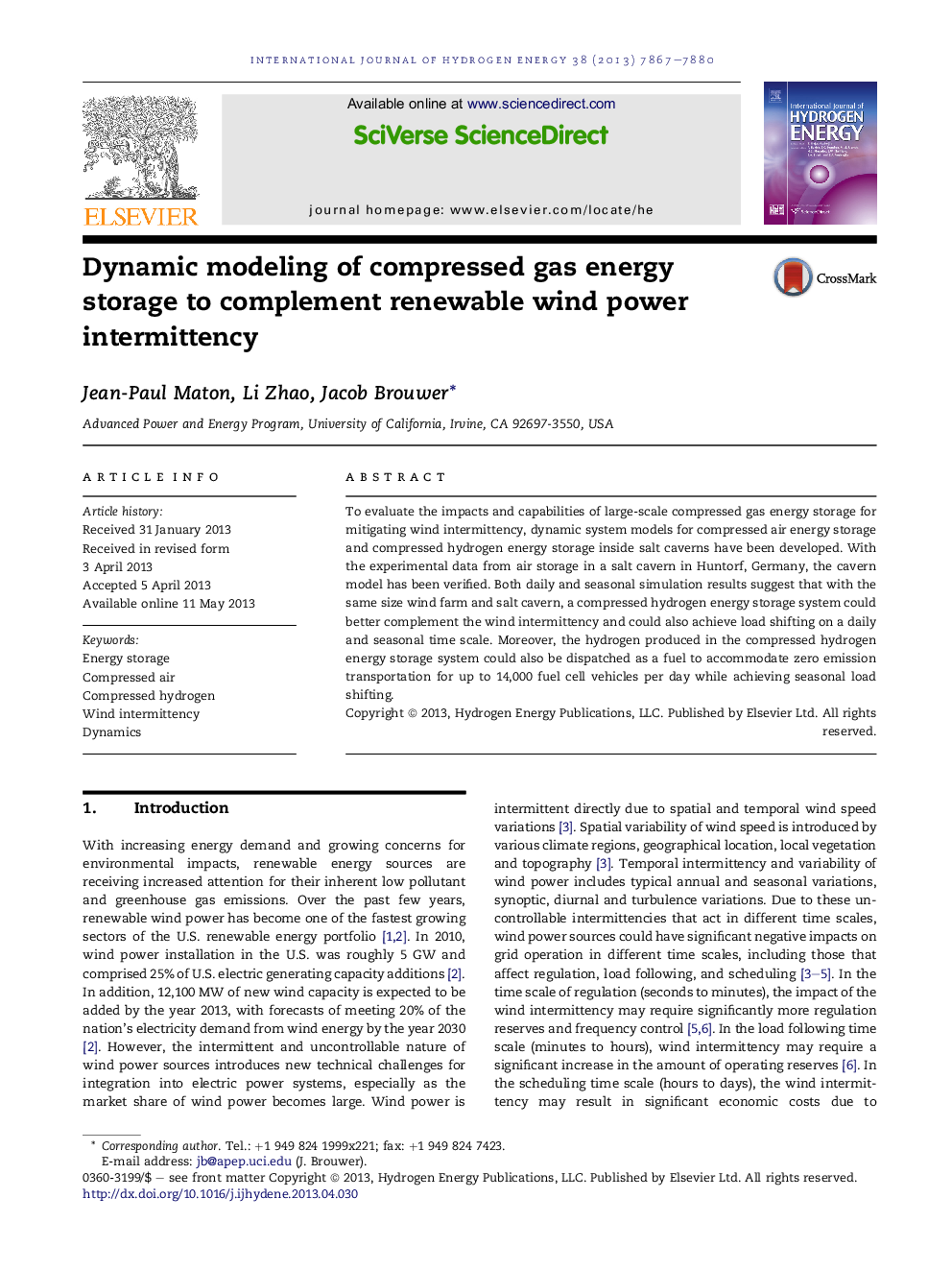| Article ID | Journal | Published Year | Pages | File Type |
|---|---|---|---|---|
| 1273642 | International Journal of Hydrogen Energy | 2013 | 14 Pages |
•Dynamic models of compressed air and hydrogen energy storage systems are developed.•The compressed air storage model performance compares well to literature data.•Performance characteristics of air storage are compared to hydrogen storage.•Hydrogen storage can better complement wind intermittency for the same resource.•Hydrogen storage achieves seasonal load shifting and produces transportation fuel.
To evaluate the impacts and capabilities of large-scale compressed gas energy storage for mitigating wind intermittency, dynamic system models for compressed air energy storage and compressed hydrogen energy storage inside salt caverns have been developed. With the experimental data from air storage in a salt cavern in Huntorf, Germany, the cavern model has been verified. Both daily and seasonal simulation results suggest that with the same size wind farm and salt cavern, a compressed hydrogen energy storage system could better complement the wind intermittency and could also achieve load shifting on a daily and seasonal time scale. Moreover, the hydrogen produced in the compressed hydrogen energy storage system could also be dispatched as a fuel to accommodate zero emission transportation for up to 14,000 fuel cell vehicles per day while achieving seasonal load shifting.
